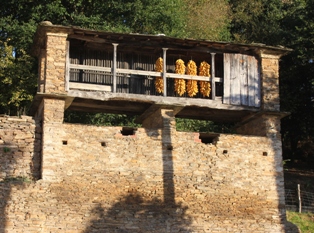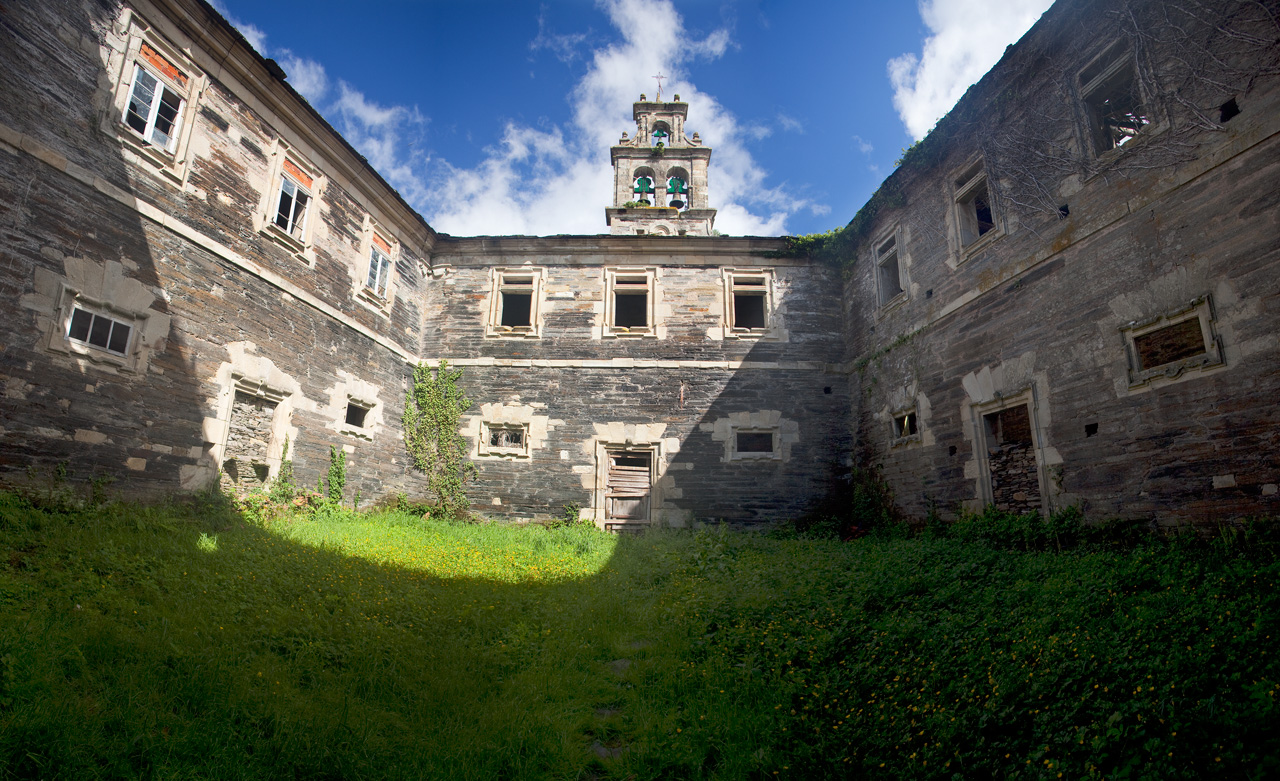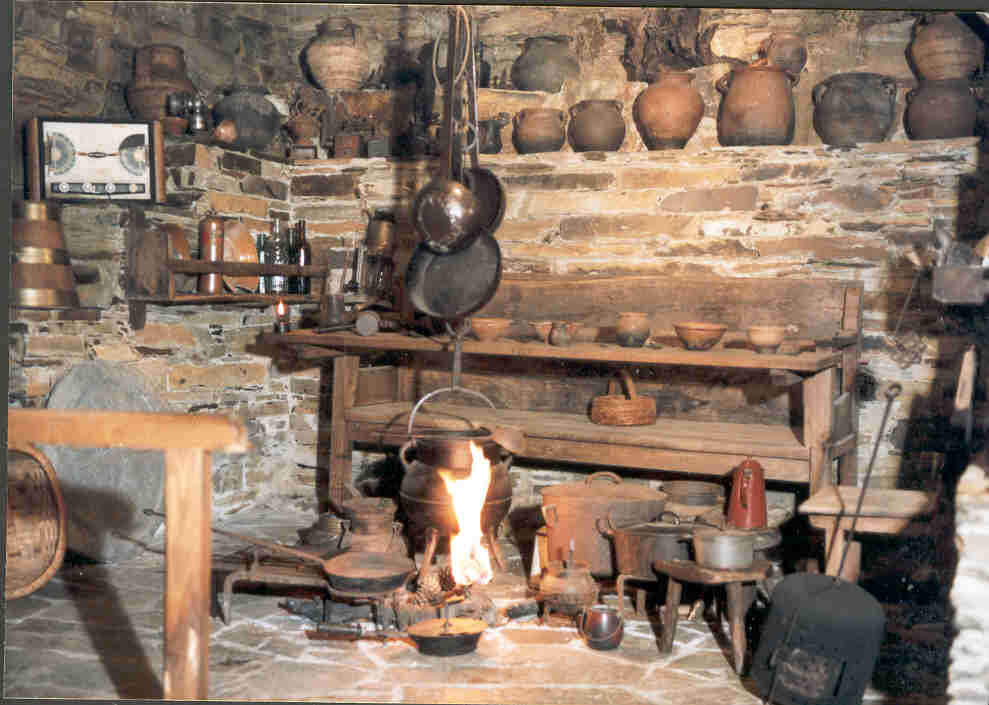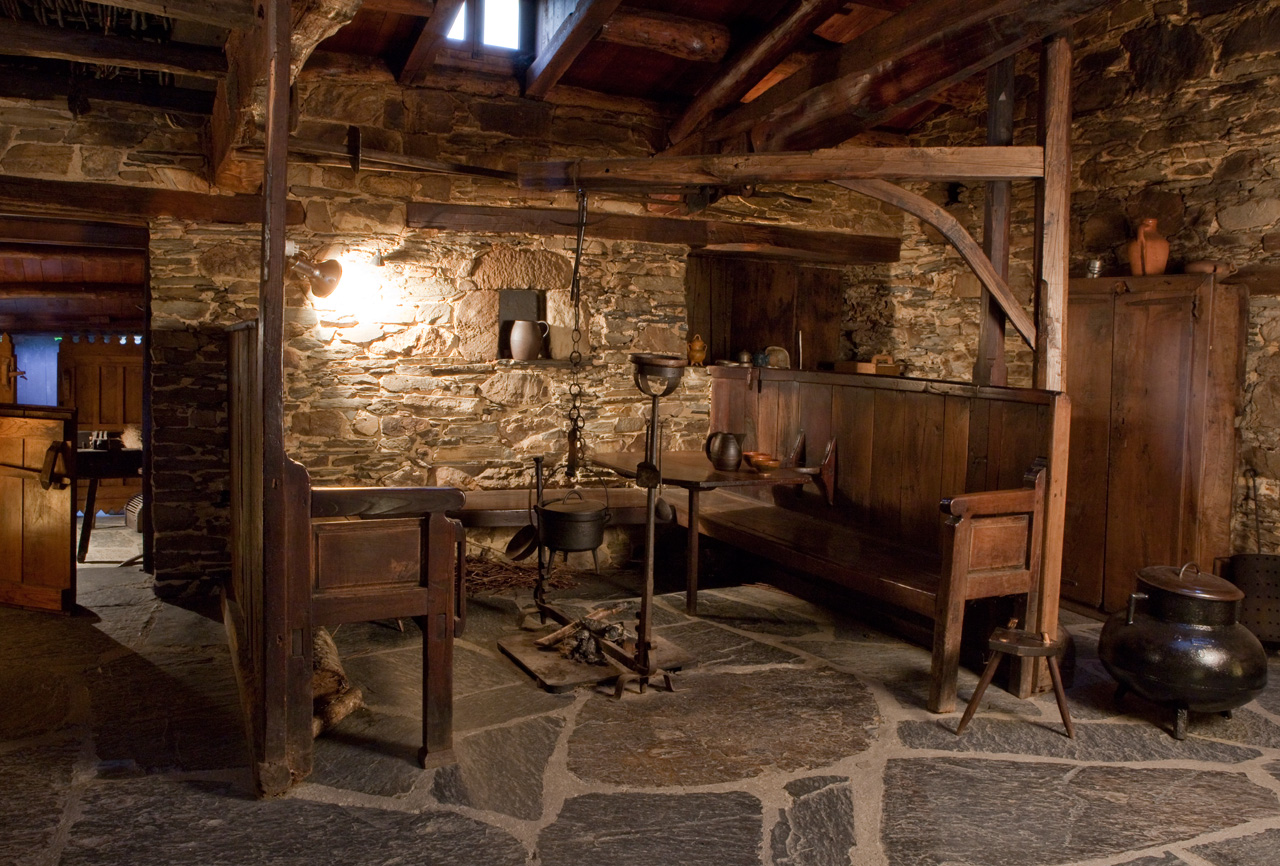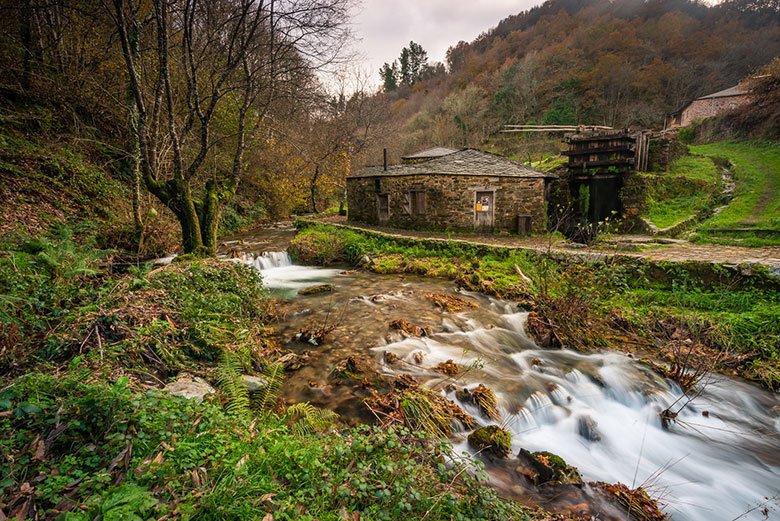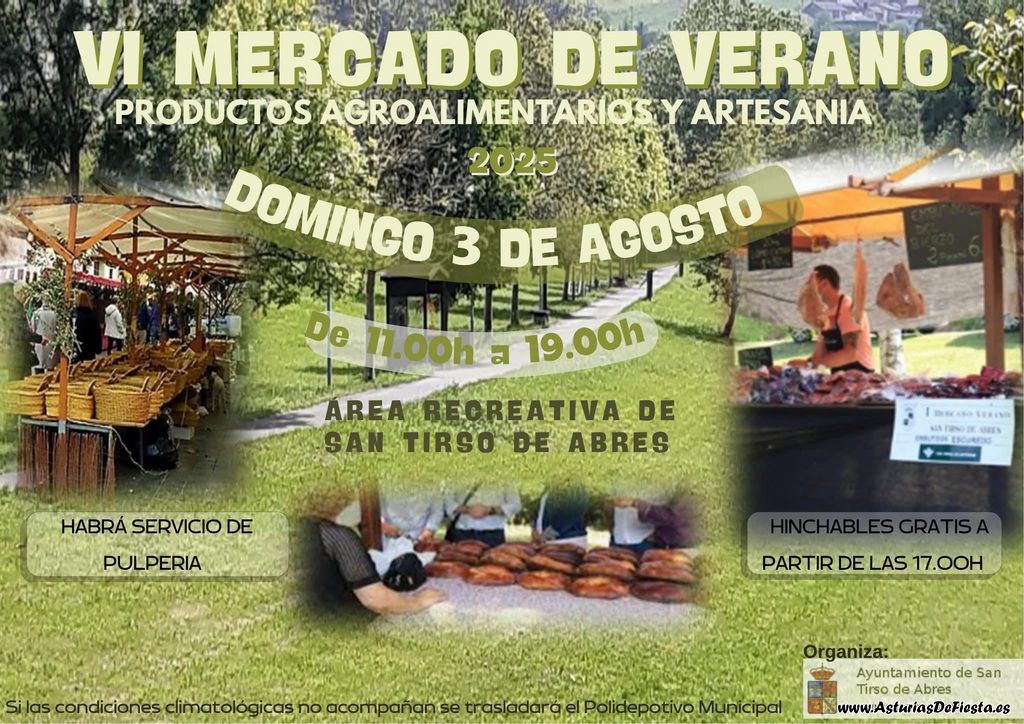- Home
- What to visit?
- Mon Palace
Mon Palace
- San Martín de Oscos
- Heritage
Among the artistic heritage of San Martín de Oscos it is worth mentioning the legendary and majestic Palacio de Mon. Conditioned by the sloping terrain, its main facade faces south while its foundations adapt to the slope, fitting into the west bay below ground level while developing height to the east.
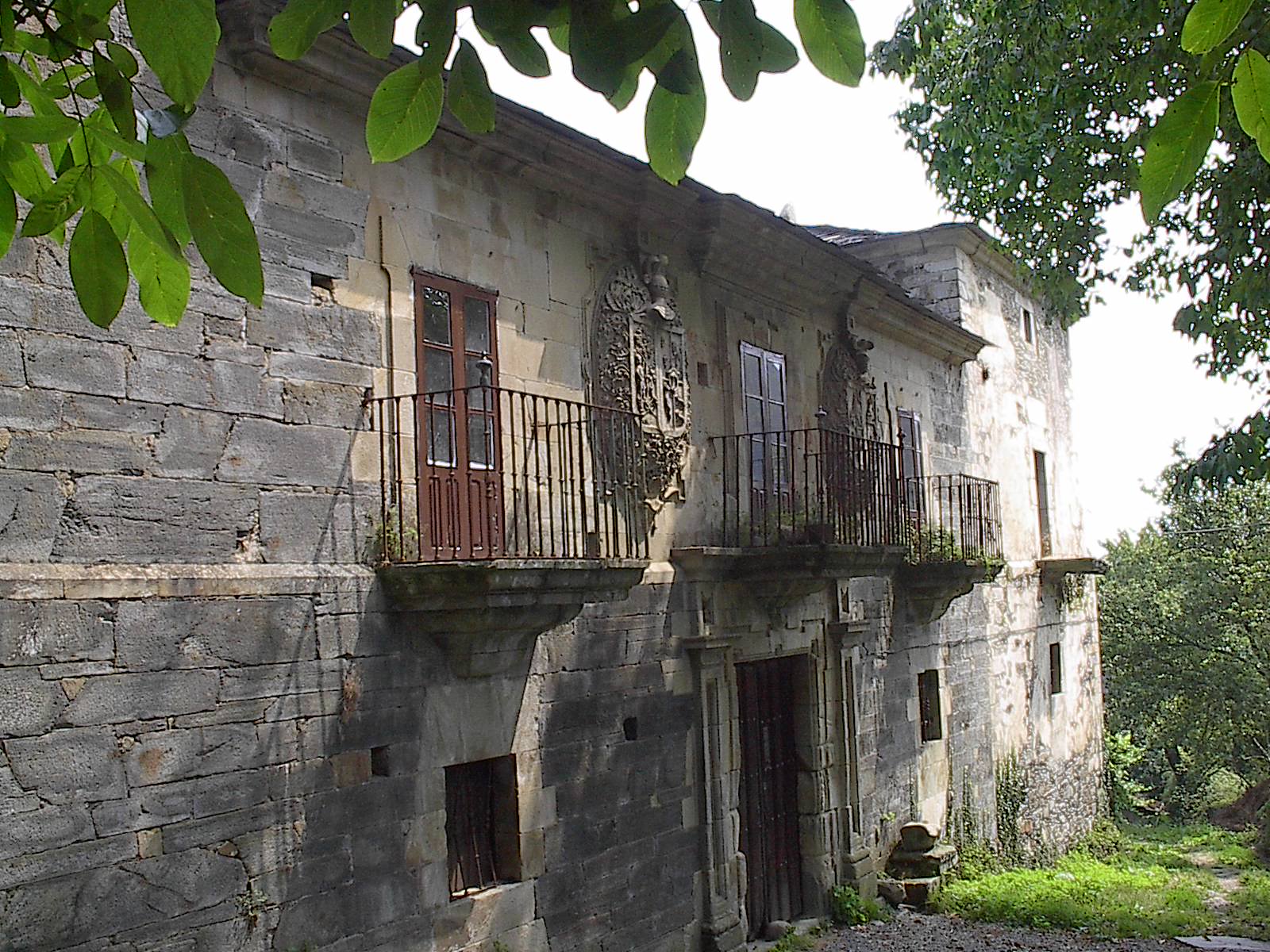
The ground plan is divided into two parts articulated around two courtyards. The front part forms a rectangular plan, with four bays that close the courtyard located behind the main entrance. Aligned with the bays, there are square towers of greater height. The rear part is arranged behind the bay that closes the first courtyard, forming a trapezoid-shaped plan, with the chapel and an entrance gate on its north front. Several staircases in each courtyard give access to the different rooms, as well as to the upper floor, open to the courtyards through wooden corridors set on stone bases. Two pilasters support the flight of the east bay over the rear courtyard.
The tower located in the southeast corner and the central bay show the oldest part of the building, dating back to the 16th century, although the central bay shows late medieval features, which leads us to think that it is a building reconstructed from a medieval tower-house. The ruins of the east side bay had a tower, now demolished. The rest of the building was built in several phases throughout the 18th century, using perfectly carved sandstone and slate masonry and ashlars.
A remarkable element of the building is the chapel, under the dedication of San Fernando, a name that was customary for the first-born sons of the family in the 18th century. The chapel is composed of a small and short nave-presbytery with a barrel vault topped by a straight headwall, which on the gospel side shelters a sepulcher. Before it opens a higher nave with a gabled roof, on whose left side is the access to the whole by means of a door that opens to the patio, and that is crowned on both sides by two windows. At the foot there is a wooden tribune, which is accessed by a staircase from the access nave, and that allows to follow the services in the corridor of rooms that is below.
The palace complex follows the model of the stately residence of the Baroque period (coats of arms, gargoyles, cornices, balconies), which are concentrated on the main façade, where a lintel door stands out, with pilasters and moldings of orejones, flanked by two impressive coats of arms with the arms of the house, interspersed between the balconies of the upper floor.
Inscriptions on the coats of arms of the palace of Mon:
These arms and coat of arms belong to the house of Mon.
I won them as strong and I will defend them in this way.
Ybias Ybias God help me
Velarde, the one the serpent killed, married the princess.
The Valledor site is old and of great value,
Gentlemen of this surname do not forget it
Legend of the palace of Mon
“There existed in the times when time was not measured, a multiform monster with a deadly kiss, he was master of the distance and destroyed by imposition of his atrocious distance. He was the champion of night and day, but his cruelties were measured by stages of darkness. Terror did not cease in Los Oscos.
A good king who lived on high and who ruled with the length of his sight, with the depth of his gaze, with the loftiness, with the loftiness, with the height of his sights and who watched over his people, offered the hand of his daughter, very beautiful, to the one who would destroy the elemental monster. A young man, very beautiful, finally emerges from among the people, and seizing the look of the monster, kills him, winning the hand of the tender princess. When the time comes to receive the jewel, the young hero refuses the hand of the beloved on the grounds that he has no home. The king immediately promises to build a palace where the happy couple will live. The current palace of Mon, haunted and full of legend.
The people of the Oscos, asked about the palace will answer: the palace was built for the first person of the king”.
Basic information
- 615 375 701
- turismo@sanmartindeoscos.es
- Mon (San Martín de Oscos)
Schedule
Guided tours summer 2021:
from Wednesday to Sunday at 12:00 noon.
Essential to make an appointment with the staff of the tourist office (open from 10:30 am to 6:00 pm every day except Wednesday and Thursday – phone: 615375701)
Currently you can visit the Exhibition “La Casa de Mon” inaugurated on July 14, 2015.
Prices
Adults and children over 10 years old:
2,00 €
Children 10 years old and under:
free of charge



